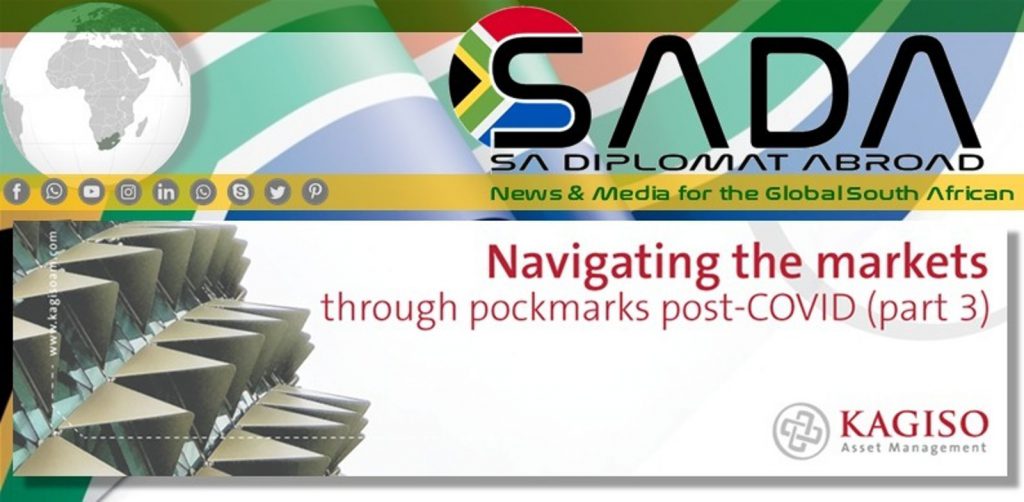We are pleased with the extent of our fund’s rebound and outperformance in the wake of the unexpected pandemic market shock, now more than a year behind us.
Rapid rollout programs of (very effective) vaccines have substantially progressed in many developed markets, with laggard countries (like Germany and Japan) rapidly catching up. This is allowing a faster return to more normal activity in those regions, limiting further scarring in services sectors (particularly tourism and leisure). Unfortunately, several less wealthy nations are enduring continued heavy Covid-19 impacts, accompanied by slow vaccine rollouts. This is delaying their economic recoveries. It currently appears that the rate of vaccine rollouts is insufficient to contain the virus worldwide and, with mutations occuring where the virus is raging, it is likely that negative economic effects will endure for an extended period of time.
Developed market consumer and corporate health appears to have been largely preserved through extensive and ongoing fiscal and monetary support. Labour markets are reasonably healthy and are thus far showing resilience where government sponsored furlough schemes are ending. In the USA, the level of fiscal support has increased further this year and is currently providing a positive and enduring boost for the global economy. In the near-term it seems that many developed economies are growing at above trend levels post their pandemic recoveries. Nevertheless, sustainable economic conditions may be visible only when fiscal support and monetary stimulus meaningfully tapers off more meaningfully and the reality of permanent job losses manifests.
The Chinese economy remains strong since its paid resumption of activity following the successful early containment of the pandemic, government stimulus and surprisingly strong exports and manufacturing activity. Initially exports were buoyed by temporary Covid-19-related goods demand and thereafter sustained by improving global activity. Consumer spending has recovered (showing reasonable growth off pre-crisis levels) but confidence remains lackluster. Pre-crisis risks do, however, remain – a disruptive moderation and rebalancing of economic growth (away from fixed asset investments and towards consumption) and potential further deterioration in geopolitical relations.
The local economy has continued to recover, with consistently high commodity prices (particularly platinum group metals and iron ore) significantly supporting economic outcomes and the agricultural sector remaining buoyant. However, with an ineffective vaccine rollout, recurring Covid-19 variant surges continue to hamper the recovery of our services sectors. South Africa is lagging the global recovery considerably, showing signs of permanent economic damage from the lockdown and years of state mismanagement. We suffer from a very depressed labour market, unstable electricity supply, weakened and tax-hungry municipalities and chronically low business and investment confidence. For these reasons, we remain pessimistic regarding the structural growth rate for the local economy (which we believe has severely weakened in recent years) and have been wary of extrapolating a short-term cyclical growth rebound too far into the future when valuing cash flows.
Recent actions to liberalise private sector electricity production are a step in the right recovery direction. In addition, actions to rebuild crime fighting and tax collection capabilities are advancing, although still far from sufficient and far too slowly. A full post-crisis economic recovery will take meaningfully longer than the rest of the world due to the inherent structural weaknesses of the South African economy, with increased risk due to unsustainably high sovereign debt.
The shocking and tragic recent looting unrest and resultant sapping of business confidence and economic damage (particularly in KwaZulu-Natal) are another reminder of the long-term structural growth impediments we face. Recurrent social instability and unrest is an unfortunate inevitability given very high levels of unemployment and inequality.
The medium-term outlook for developing economies remains widely varied, with differing exposures to volatile energy prices, strong other commodity prices, decimated tourism industries and differing impacts from the management of the pandemic and progress of vaccine rollouts. Due to recovering domestic demand and some signs of increased inflation, policy interest rates have started normalising higher in these economies from the extraordinarily low crisis levels.
Extremely high developed market fiscal and monetary stimulus measures are providing a powerful support for financial markets and have led to dramatic increases in general asset prices. We expect increased volatility and weakness in many now buoyant areas when fiscal stimulus inevitably wanes, if sustained inflation emerges at last and when interest rates rise from their extremely low levels.
Evidently, companies with stronger balance sheets, better business models and flexible, more adaptable management teams are outperforming in the recovery period, and we believe the outperformance will be even more pronounced in the weaker economy in the years ahead. We are maintaining exposure to such companies, at the right price.
Our portfolios contain a diverse selection of local mid-cap holdings offering very attractive upside.
Within equities, we maintain our high exposure to low-cost, growing PGM miners and we expect a sustained acute shortage in PGM metals when global economic activity normalises. This is due to structural supply impediments, demand from tightened emission regulations, increased jewellery demand and a rapidly growing hydrogen energy sector. Current share prices offer very attractive near-term free cash flow yields, even if commodity prices are lower.
By: Kagiso Asset Management team
Kagiso Asset Management (Pty) Ltd is a licensed financial services provider (FSP no. 784)
September 4, 2021
Quarterly commentary by Kagiso Asset Management
